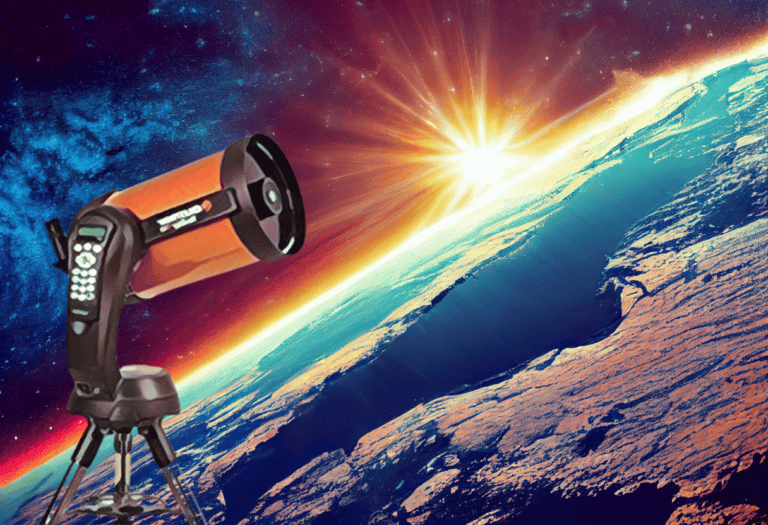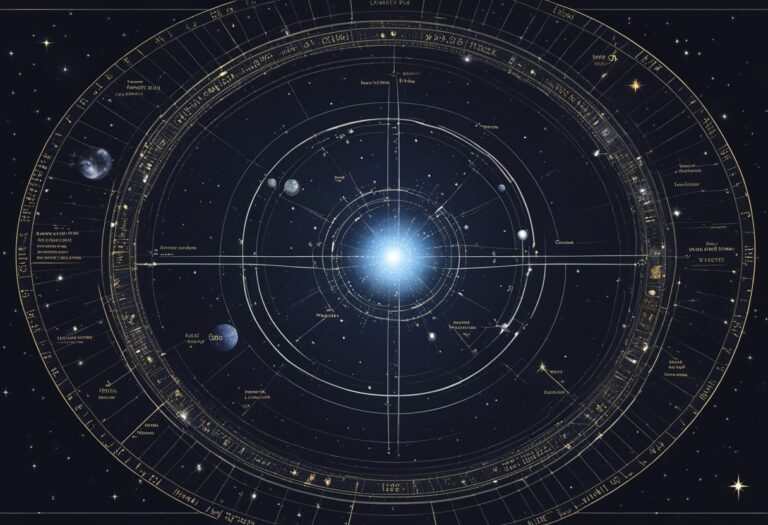The night sky has been a canvas for the human imagination throughout history.
As you gaze upward, the sprinkling of stars and celestial bodies has not only inspired stories and myths but also intricate naming systems. The names of stars often carry tales of ancient heroes and mythological creatures, while the names of moons are frequently rooted in a rich tapestry of cultural and scientific heritage. This intricate celestial nomenclature has practical implications for astronomers and stargazers alike.
Understanding the naming conventions of stars and moons opens up a deeper appreciation for the cosmos. Stars are categorized by their spectral characteristics and brightness and are often named after their constellation affiliations, historical figures, or discoverers. Moons, the natural satellites that orbit planets, are generally named following a set of guidelines by the International Astronomical Union (IAU).
These names not only identify individual moons amongst the plethora discovered but also pay homage to a variety of mythological figures and human endeavors in space exploration.
Star and moon names, steeped in history and science, are drawn from mythology, astronomy, and cultural narratives. Stars are typically named for their constellation, brightness, or discoverer, while moon names, governed by the IAU, often reflect mythological ties. These celestial monikers enrich your understanding of space and its exploration.
Types of Stars
When exploring the vastness of the universe, you’ll encounter stars of various sizes, colors, and complexities. Understanding their classification helps you appreciate the diversity of these celestial bodies.
Spectral Classification
Stars are categorized based on their spectral characteristics, which correspond to surface temperature. This classification is known as the Morgan-Keenan (MK) system. The system uses letters O, B, A, F, G, K, and M, with O being the hottest and M the coolest. Additionally, a numeral from 0 to 9 indicates temperature subdivisions within each class, and a Roman numeral indicates the luminosity.
Binary and Variable Stars
Binary stars are pairs of stars orbiting a common center of mass. They are crucial for determining stellar masses, which is essential in studying star characteristics. Variable stars, on the other hand, are stars whose brightness changes over time. These changes can be due to a variety of reasons, ranging from eclipses within binary systems to changes in the star’s size or surface conditions.
Star Formation
Star formation is a complex process initiated in molecular clouds where regions of higher density may collapse under gravity. This process eventually leads to the ignition of nuclear fusion in the core of the protostar. Once a balance between gravitational collapse and outward thermal pressure is found, a main sequence star is born. The details of star formation are observed in various stages in stellar nurseries, such as the famous Orion Nebula.
Naming Conventions
In the world of astronomy, the names of stars and moons are anything but random; they are grounded in a range of systems and traditions that provide meaningful context.
Traditional Names
Many stars are known by their traditional names, often derived from ancient mythology or descriptive terms in various languages. For example, Sirius is also known as the Dog Star and is the brightest star in the sky. The names of moons, such as Io, Europa, Ganymede, and Callisto of Jupiter, come from mythological figures associated with the Roman god Jupiter (or his Greek counterpart, Zeus).
Bayer Designations
Stars are often identified by their Bayer designations which consist of a Greek letter followed by the genitive form of their constellation’s name. The brightest star in a constellation receives the alpha designation, the second brightest beta, and so on. For instance, Alpha Centauri is the closest star system to the Sun.
Flamsteed Numbers
Alternatively, stars are catalogued using Flamsteed numbers, which give stars a number followed by the constellation name. These numerals are assigned consecutively in each constellation in order of increasing right ascension. For example, 61 Cygni is a star system in the constellation Cygnus.
Modern Catalogs
In contemporary astronomy, stars and celestial objects are systematically categorized in modern catalogs. These databases use precise coordinates and standardized naming conventions. Some well-known catalogs include the Henry Draper Catalogue (HD) and the Hipparcos Catalogue (HIP), which have assigned numbers to over a hundred thousand stars.
Popular Stars

In this section, you’ll explore some of the most well-known stars visible from Earth. Each carries with it a rich history, and some are vital navigation tools that have been used for centuries.
Sun
The Sun is not just the brightest star in our sky; it’s the central figure of our solar system. Approximately 93 million miles from Earth, it’s vital for the sustenance of life, providing the necessary warmth and light for various processes on our planet.
Polaris
Polaris, commonly known as the North Star, holds a special place in celestial navigation due to its fixed position in the sky. If you’re in the Northern Hemisphere, finding Polaris gives you a reliable indication of true north.
Betelgeuse
Betelgeuse is a red supergiant and one of the largest stars visible to the naked eye. Located in the constellation Orion, it is renowned for its distinctive orange-red hue and is expected to end its life in a supernova explosion within the next million years.
Sirius
Often referred to as the “Dog Star,” Sirius is the brightest star in our night sky. It’s located in the constellation Canis Major and is a binary star system, composed of the main sequence star Sirius A and its faint white dwarf companion, Sirius B.
Major Moons
As you explore the cosmos, you’ll encounter diverse moons, each with unique characteristics and some considered major due to their size, composition, or historical significance.
Lunar Characteristics
The Moon, Earth’s only natural satellite, presents some fascinating features. With a diameter of about 3,474 km, it plays a crucial role in influencing Earth’s tides. Its surface, marked by craters from cosmic impacts, offers a record of the solar system’s history.
Significant Moons of Jupiter
Jupiter boasts a massive collection of moons, with Ganymede standing out as the largest in the solar system, even exceeding the diameter of Mercury at 5,268 km. Others like Europa are of high interest due to the potential subsurface ocean beneath its ice crust, hinting at the possibility of extraterrestrial life.
Prominent Moons of Saturn
Titan, Saturn’s largest moon, is enveloped in a thick atmosphere and is the only moon known to have substantial liquid bodies on its surface. Meanwhile, Enceladus captures attention with geysers that eject water ice and organic compounds, implying an interior ocean or water activity.
Discovery and Research
Your exploration of the cosmos and understanding of celestial bodies are deeply rooted in historical pursuits and driven by technological innovation.
Historical Discoveries
The act of naming stars and moons has always reflected the collective curiosity and cultural significance of societies throughout history. Civilizations such as the Babylonians and Greeks meticulously observed the night sky, denoting patterns and naming constellations which often derived from mythology. For example, the moons of Jupiter, discovered by Galileo Galilei in 1610, carry the names of mythological figures related to Zeus, which underscores the connection between myth and astronomical discovery.
Technological Advancements
With each technological leap, from Galileo’s telescopes to modern-day space telescopes like Hubble and observatories equipped with adaptative optics, your understanding of the heavens has expanded. These advancements have also facilitated the discovery of new celestial bodies and the ability to name them. The International Astronomical Union plays a crucial role in the naming process, ensuring that each discovered object is categorized and named systematically. The precision of these technologies allows astronomers to identify exoplanets, their moons, and distant stars with greater accuracy, leading to an ever-expanding catalogue of named celestial bodies.
Frequently Asked Questions
This section addresses your curiosities about celestial nomenclature, providing insights into the cultural and systematic naming of stars and moons, as well as offering inspiration for celestial-themed names.
What are some notable star names and their associated meanings?
Many star names like Rigel and Betelgeuse have Arabic origins and mean ‘foot’ and ‘hand’ respectively. Polaris, known as the North Star, signifies ‘pole star’ due to its near alignment with the Earth’s rotational axis.
How are stars and moons in the solar system named systematically?
Official star names are usually Latinized and moons follow a naming convention where they are named after mythological characters related to their planet, like Jupiter’s moons which are named after lovers of Jupiter or Zeus.
Can you suggest some celestial-themed names for newborn girls?
Names such as Luna, Stella, and Aurora are inspired by the moon, stars, and the natural phenomena of Northern Lights, embodying a cosmic elegance.
What are some elegant and outstanding names of constellations and stars?
Constellations like Orion and Andromeda, or star names such as Sirius and Vega, offer a timeless appeal rooted in their astronomical significance and mythological stories.
Which star names are particularly popular for naming boys?
Names like Orion, Leo, and Hunter, often associated with strength and hunting, have celestial origins and are popular choices for boys.
Could you provide examples of significant female-associated star names?
Prominent star names with feminine associations include Venus, the name of the Roman goddess of love, and Stella, a name meaning ‘star’ that exudes a celestial charm.







